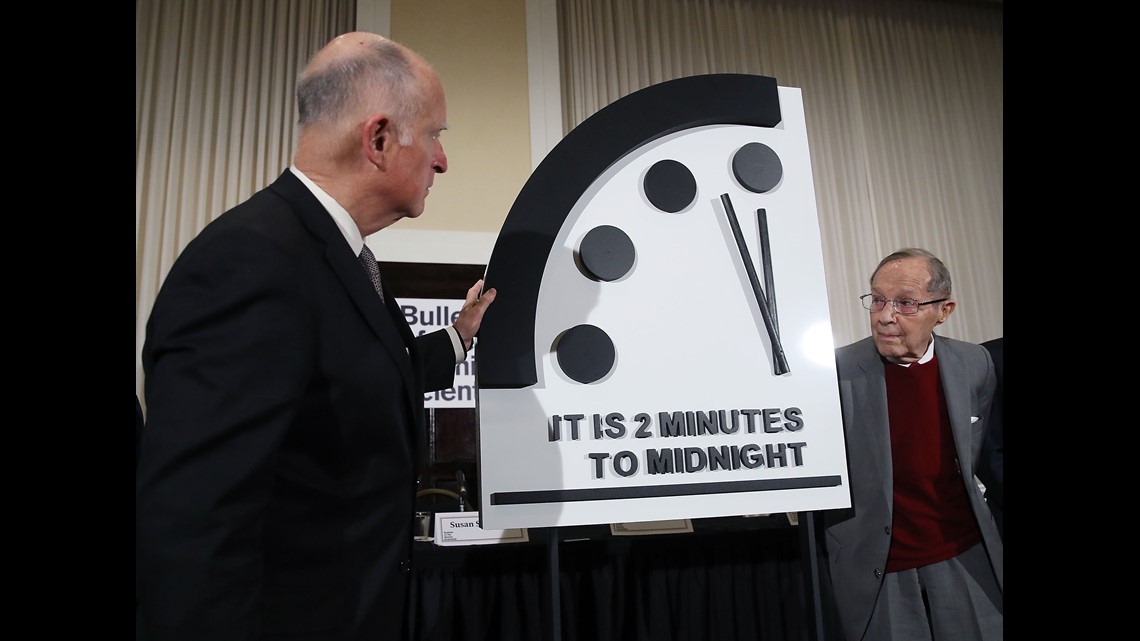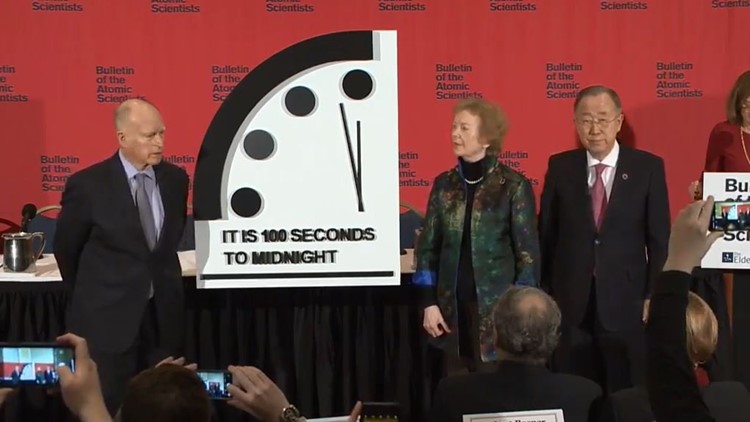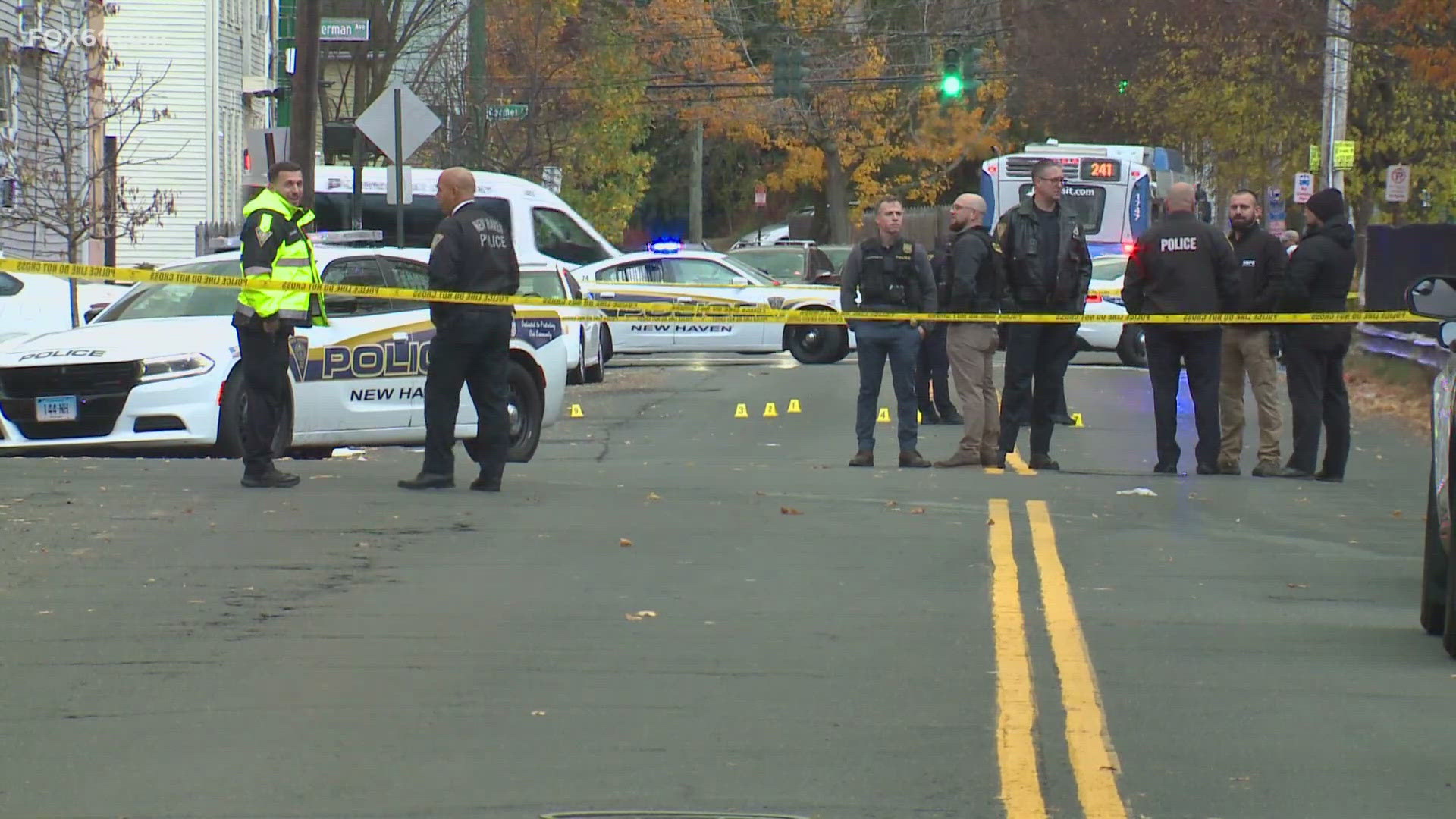The Doomsday Clock used to measure just how close humanity is to total annihilation, has ticked closer to midnight.
Citing two threats of climate change and nuclear war, the minute hand ticked 20 seconds closer to midnight; it’s the closest the Clock has been to destruction.
Midnight on the Clock symbolizes the end of the world, and each year, the Bulletin of the Atomic Scientists decides what time it is. Last year, it was set to 11:58 p.m. — just two minutes away from destruction.
“The Doomsday Clock is a design that warns the public about how close we are to destroying our world with dangerous technologies of our own making,” the Bulletin said on its website. “It is a metaphor, a reminder of the perils we must address if we are to survive on the planet.”


So what factors determine how close we are to midnight? Mainly, the threat of nuclear weapons and climate change, according to The Bulletin’s President Rachel Bronson.
When the Clock was created in 1947, the greatest threat to humanity was nuclear war as the US and Soviet Union were headed into a nuclear arms race.
“But in 2007, we felt we couldn’t answer those questions without including climate change,” Bronson said.
In recent years, the Bulletin’s panel of scientists and other experts has started to look at other “disruptive technologies,” including artificial intelligence, gene editing, and cyber threats, Bronson said.
While climate change and the nuclear threat remain the main factors, the Bulletin has identified “cyber intrusions and fake news as a threat enabler,” Bronson said. “The information environment has become complicated and increasingly difficult to separate out facts from fiction, and that has made all the other threats more significant.”
The same threats, just amplified
In 2018, the clock was set to 11:58 p.m. and it remained that way for 2019 as the threat of North Korea’s nuclear weapons and climate change had the world on its toes.
But it doesn’t seem likely that this year’s Clock will be set any further away from midnight as the same threats were just amplified.
This past year, we saw the nuclear threat rise with both North Korea and Iran.
The historic meetings with North Korean leader Kim Jong Un by President Donald Trump and South Korea’s Moon Jae-in initially raised hopes of a possible deal on denuclearization, but there has been no significant progress made.
Recently, the Pentagon’s No. 2 general said North Korea is “building new missiles … new weapons as fast as anybody on the planet.” Earlier this month, state news agency KCNA reported that Kim told his government officials that North Korea should no longer feel bound by its self-imposed halt on nuclear weapons and long-range missile testing.
And with Iran, the hashtag #WWIII started trending on Twitter after top Iranian military commander Qasem Soleimani was killed in a US strike. Iran retaliated with a strike of its own, firing more than a dozen ballistic missiles at Iraqi military bases housing US troops.
Now onto climate change. 2019 was the second-hottest year on record, capping off a decade that was warmest in recorded history, according to NASA & NOAA.
“This shows that what’s happening is persistent, not a fluke due to some weather phenomenon: We know that the long-term trends are being driven by the increasing levels of greenhouse gases in the atmosphere,” a NASA official said of the findings.
Experts say climate change has worsened the scope and impact of natural disasters like fires and floods. Australia has seen that impact firsthand, with wildfires ravaging the country for months.
So what can we do to set the Clock back?
The threats of nuclear destruction and global warming might seem too big for us to handle, but the Bulletin’s goal is not to use the Clock as a scare tactic, but to get people talking.
“What we try to do is give the public the ability to talk about the state of nuclear security and to really pressure their leaders to pay attention to that and climate change and show that they’re concerned about it,” Bronson said.
“In democracies, we try to encourage people to talk to their political representatives that these huge investments that are going into nuclear arsenals might be directed elsewhere. That arms control agreements should be signed to reduce the threats.”
In fact, the Clock hand has been moved away from midnight almost as often as it was moved closer, the Bulletin said.
It moved the hand farthest away — a whopping 17 minutes before midnight — in 1991, when President George H.W. Bush’s administration signed the Strategic Arms Reduction Treaty with the Soviet Union.
The-CNN-Wire



